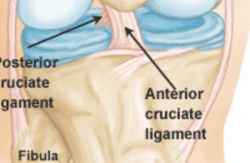Images
This course will be beneficial if you wish to learn how to communicate with the sounds and music of American English. The purpose is not to increase your vocabulary, nor to improve your grammar, but to deal with the sounds of the words that you speak. Your message is of primary importance, but it may not be understood if your pronunciation is imprecise, inconsistent, or regional. This course is particularly useful for actors or for others who need to speak to diverse audiences, such as when giving a business presentation.
You will have the flexibility of time to experience, at your own pace, aural and visual aspects of a sound. Within the course, students are assessed on their ability to recognize each sound in a variety of contexts and are given feedback on their particular answers.
You will learn to:
Articulate sounds and words using the dialect of Standard American English.
Listen and think in terms of symbols for sounds, using the International Phonetic Alphabet.
Use the International Phonetic Alphabet to transcribe from the Roman alphabet into the forty-four sounds of Standard American Dialect and vice versa.
Analyze texts for phrasing, operative words, intonational patterns, degrees of stress.
Achieve a proper use of weak forms for certain parts of speech in the English Language, making your speech clear and efficient.
Additional Course Details
Topics Covered: Foundations of Speech, Intonational Patterning of American English, Vowels, Dipthongs, Consonants (coming soon), Weak Forms. Additional Software or Materials Required: You will need to have Flash and Quicktime installed. These programs are free. More detailed information is provided in the course under “Test and Configure Your System.”
In-Depth Description
In the context of effective speech, “Standard American” refers to a single standard, devoid of regional influences. Few people in the U.S. grow up speaking Standard American English Dialect; geography plays a major role in the way people speak. An accent or a dialect that could interfere with a clear exchange of ideas with those using a differing dialect or accent.
It is true that there is no official standard, but there is an understood range of acceptability for American English. As a professor of speech for actors, Baker-Shirer aims to teach a manner of speech that communicates the content of words with clarity and consistency.
“Standard American” is not a judgment of value; none of the numerous American dialects is superior to the others. Instead it is a standard for clear, consistent speech recognizable to listeners across dialects. It does not burden the listener with the extra cognitive load of filtering out regional differences before reaching the meaning or intent of the speaker. Speaking Standard American dialect means speaking English that will sound American—simple, unaffected and distinct, devoid of regional influences.
This course is divided into six sections or units:
Foundations of Speech This first unit of the course is an overview of some of the basic concepts that will lay a foundation for your study of the Standard American English dialect. These concepts include sound identification, voiced and voiceless sounds, syllabification, and aspiration and unaspiration of the three stop-plosive consonant groups. Intonational Patterning of American English The next unit of this course attends to the music of Standard American English Dialect and is most essential to support and increase meaning. The techniques involved in successful vocal dynamics include: vocal range, tempo, pacing, inflection and pausing. Vowels The vowels unit will introduce you to the pure vowel sounds of the dialect. As the tone carriers, vowels are an important part of your speech, and there is a great deal of subtlety between some of these sounds. Here we will introduce you to the fifteen vowel sounds of the dialect in three categories, front, mid, and back vowels. Diphthongs This unit will build on what you learned in the vowels unit by introducing the ten diphthongs of the dialect. In the Standard American English Dialect there are five so-called long diphthongs and five always short diphthongs of r. Consonants (Coming Soon) This unit introduces the second big component of speech, consonants. These are sounds that interrupt or change the sound coming from the vocal tract. They are described according to vibration, the place and manner of articulation. There are sixteen voiced consonants and ten voiceless consonants in Standard American English Dialect. Weak Forms The weak forms unit will introduce you to the concept of stress in speech. More specifically, weak forms of certain words in the English language exist to increase clarity and understanding while subordinating the inessential. The following parts of speech are usually weakened in continuous speech: articles, conjunctions, auxiliary verbs, personal pronouns and prepositions.
Similar resources
Carnegie Mellon University challenges the curious and passionate to imagine and deliver work that matters.
A private, global research university, Carnegie Mellon stands among the world's most renowned educational institutions, and sets its own course. Start the journey here.
Over the past 10 years, more than 400 startups linked to CMU have raised more than $7 billion in follow-on funding. Those investment numbers are especially high because of the sheer size of Pittsburgh’s growing autonomous vehicles cluster – including Uber, Aurora, and Argo AI – all of which are here because of their strong ties to CMU.
With cutting-edge brain science, path-breaking performances, innovative startups, driverless cars, big data, big ambitions, Nobel and Turing prizes, hands-on learning, and a whole lot of robots, CMU doesn't imagine the future, we create it.


Introduction to Biology

Biochemistry

Arabic for Global Exchange

Anatomy & Physiology

Chinese I














